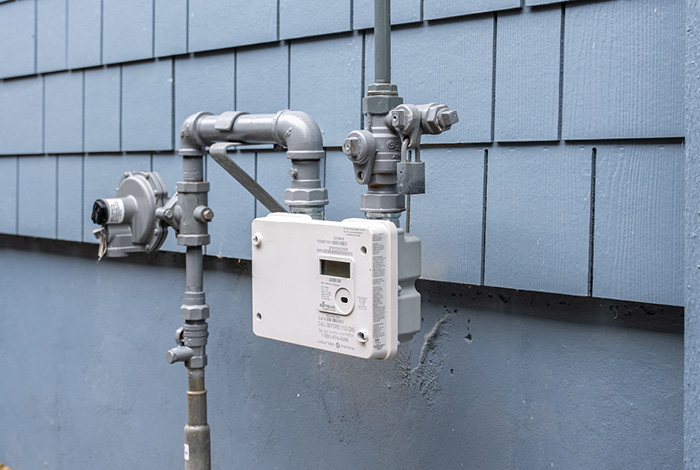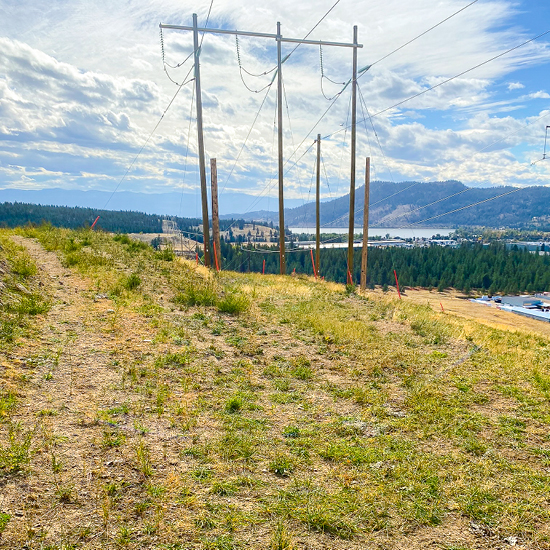From floods to fires — how we stay prepared every day
August 27, 2018
With fires burning across the province, FortisBC is prepared to protect people, the environment and our natural gas and electricity assets. And if our system is damaged, we’ll work as quickly as the situation safely allows to get much needed services back online for our customers.
“Whether it’s responding to fires, floods, line hits or storm damage, it’s what we show up prepared to deal with every day,” said T.M. Sandulak, manager, emergency management and business continuity programs at FortisBC. “In fact, there’s a lot we prepare for, well in advance of an incident.”
T.M. and his Emergency Management team are responsible for making sure the company is ready for anything. For them, thinking about how to keep people safe and being on the look-out for potential risks is a 24/7 task. And they are not alone — safety is everyone’s top job at FortisBC.
Before an emergency
Putting emergency plans to the test is one of the ways T.M. and his team keep the company prepared. Plans are tested in a variety of emergency exercises throughout the year, from small-scale round-table discussions to large, full-scale simulations that involve other first responders like RCMP and fire officials. FortisBC teams from across the company, from field operations to public affairs and customer service, take part to practice their plans and keep their response skills sharp.
“Fortunately, our systems are well-engineered, so one of the most challenging tasks in setting up these exercises is thinking up plausible ways to break the system – it’s just not easy to do,” said T.M.
High-alert periods
When there is an active situation, such as flood and fire season, there’s a lot of work and coordination taking place behind the scenes to make sure we’re ready to respond quickly. In fact, as of August this year, there were more than 100 people at FortisBC monitoring the ongoing fire situation each day.
“Daily provincial and regional meetings keep us up-to-date on the situation as well as allow us to collaborate with other emergency responders to make sure we are working together to keep the public safe,” explained T.M. “It’s a lot of information to manage and we’re improving this all the time.”
Both natural gas and electricity operations’ crews across the province actively monitor their areas carefully for possible threats and provide daily updates. They work closely with local fire and emergency authorities to coordinate a response, if needed, to ensure public safety and protect the system. We’re also available to provincial, local and regional Emergency Operation Centres (EOCs) if they need information about our system or answers for community members about what to do if evacuated.
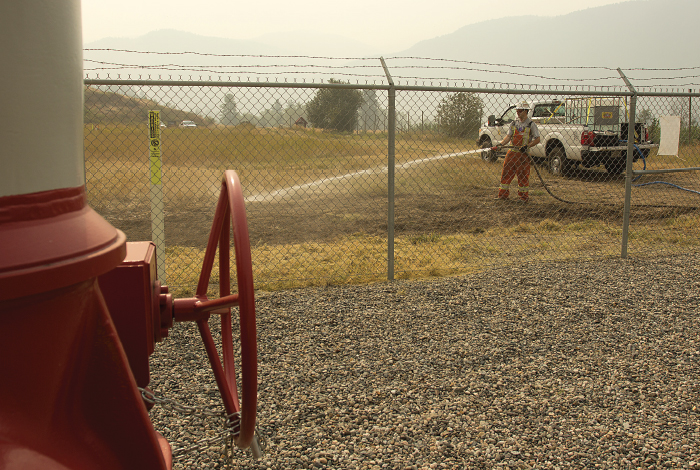
Modern technology aids field work
Our field operations’ teams are supported by our in-house GIS team who can now overlay the active fire information from BC Wildfire Service with maps of our infrastructure. Each morning, the team creates a wildfire report that shows activity within 10 metres of our system.
“The ability to have these overlays is awesome and gives us good visuals on what facilities are in the area and what the ground looks like -- it’s a tremendous asset,” said T.M. “It gives us an invaluable picture of what sections of the system may be at risk so we can take steps to protect it.”
Protecting the system could mean applying fire suppression materials or clearing vegetation that could become fuel for an active fire. It could also mean working with fire officials on shut-off plans or de-energizing sections of the system so fire crews can work safely. The GIS data helps determine priorities.
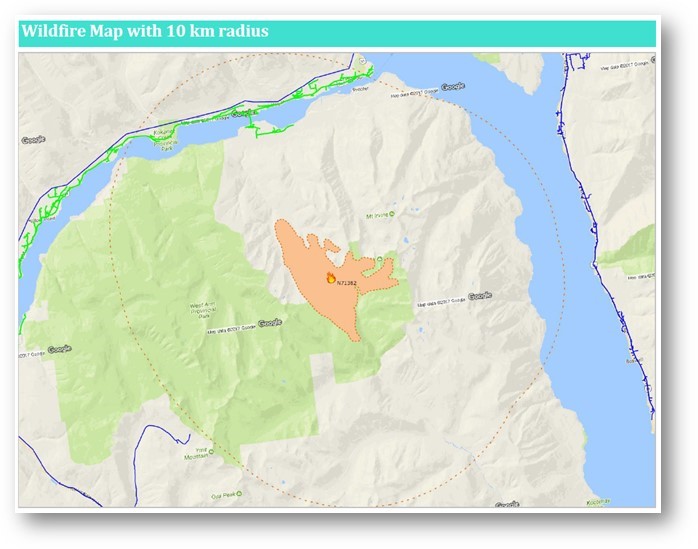
Stepping up our response
When a significant incident occurs, FortisBC activates its own EOC to support the crews on the ground who are responsible for managing the situation. Depending on the situation, the EOC can have 20 people or more taking part.
Among the tasks of the EOC are reporting to provincial bodies, keeping the public informed and managing logistics to support the crews on the ground – from equipment and materials to food and lodging. The EOC also coordinates all the groups involved to make sure everyone is informed and aware of one another’s activities.
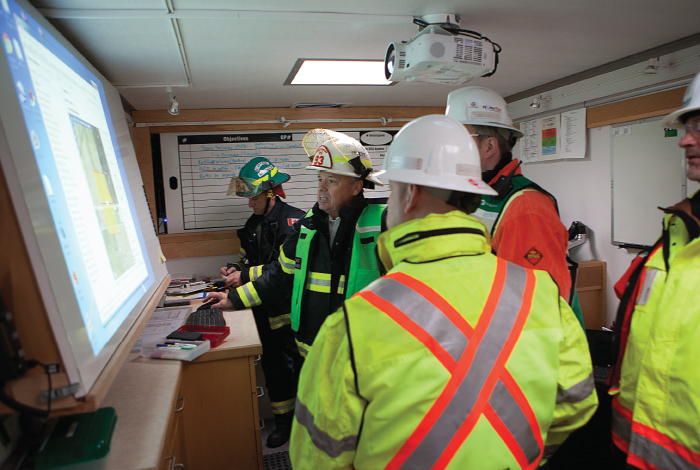
Restoring service
When damage occurs, our priority is to first make sure the situation is safe and then restore service as quickly as possible.
“This is where the skill and dedication of our operations’ crews really shine through,” said T.M. “From safe food storage to hot showers, they understand that getting electricity and natural gas services back online is how we can help people recover and return to normal life after an incident, and our crews push hard to make it happen.”
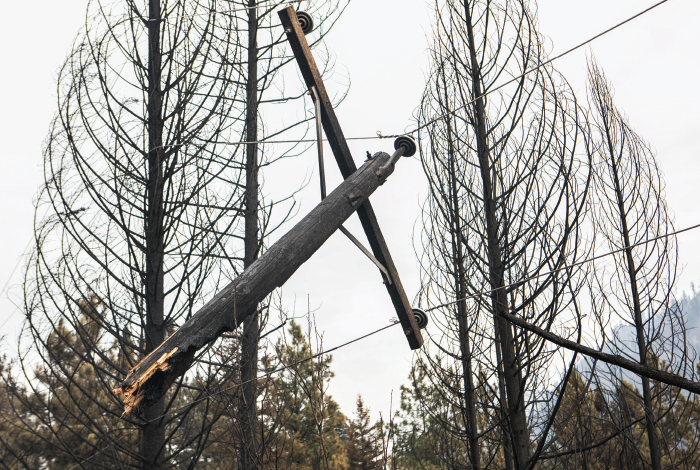
Any hazard, any time
As a result of this preparation and practice, FortisBC is well positioned to respond to any and all hazards that may come up. And we’re constantly learning and improving based on real incidents and by exercising our emergency plans.
“When you maintain close to 50,000 kilometres of natural gas lines and more than 7,000 kilometres of power lines across the province, you pay attention, long before there’s an incident,” added T.M.
Emergency response by the numbers:
- Number of full-scale and tabletop emergency exercises FortisBC completes each year - 28-34
- Number of staff involved in monitoring the 2018 wildfire situation - 103
- Number of people in a full-scale FortisBC EOC – 6 to 20+


